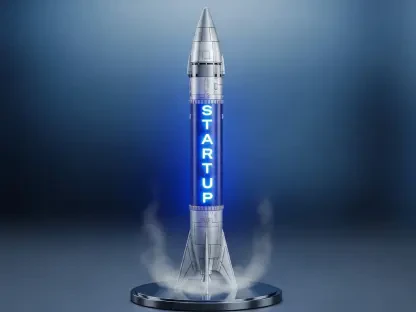Imagine a world where businesses scale effortlessly, connecting with customers across the globe through hyper-personalized campaigns, all powered by cutting-edge tools. In 2025, Software-as-a-Service (SaaS) marketing technologies are driving this reality, with over 85% of companies now relying on SaaS products to fuel their operations. The rapid adoption of these platforms has transformed how brands engage with audiences, making it crucial to understand the innovations shaping this space. This review dives deep into the technological advancements and strategies defining SaaS marketing today, offering insights into their capabilities and real-world impact.
The Landscape of SaaS Marketing Technology
SaaS marketing in 2025 reflects a dynamic environment shaped by heightened consumer demand for seamless, intuitive experiences. Businesses are compelled to deliver solutions that not only meet but exceed user expectations, pushing the boundaries of what technology can achieve. This shift has led to an emphasis on user-centric design, ensuring that every interaction feels tailored and effortless.
Competition within the SaaS sector has intensified, prompting companies to innovate at an unprecedented pace. The need to stand out in a crowded market has driven the development of tools that prioritize engagement and retention over mere acquisition. This competitive pressure fosters a culture of continuous improvement, with platforms racing to integrate the latest advancements.
Technological progress, particularly in artificial intelligence (AI), has redefined customer support and interaction within SaaS ecosystems. Regulatory challenges, such as compliance with data privacy laws, alongside economic factors like currency fluctuations, further complicate the landscape. These elements collectively influence how SaaS marketing technologies are designed and deployed, balancing innovation with practicality.
Key Technological Features and Performance Analysis
AI and Machine Learning Capabilities
AI and machine learning (ML) stand at the forefront of SaaS marketing technologies, automating complex tasks like email campaign management and customer segmentation. These tools analyze vast datasets to uncover patterns, enabling brands to craft highly targeted advertisements that resonate with specific audiences. The precision of AI-driven insights has become a game-changer in optimizing marketing efforts.
Beyond automation, AI facilitates personalized user experiences by predicting behaviors and preferences. Virtual assistants powered by these technologies provide real-time support, addressing queries with remarkable accuracy. A notable example is HubSpot’s use of AI to determine optimal email send times, significantly boosting open rates based on individual recipient habits.
The scalability of AI and ML integrations allows SaaS platforms to adapt to growing business needs without sacrificing performance. However, challenges remain in ensuring data quality and managing the computational resources required for such systems. Despite these hurdles, the transformative potential of AI in marketing continues to expand, promising even greater efficiency.
Video and Interactive Content Tools
Video marketing technologies have emerged as powerful assets for SaaS companies, simplifying the communication of intricate solutions to users. Platforms embedding videos report users spending significantly more time engaging with content, enhancing understanding and retention. This format proves especially effective for explaining technical features in an accessible manner.
Interactive content tools, such as webinars and dynamic infographics, further amplify engagement by encouraging active participation. SaaS brands leverage these technologies to host live sessions and create visually compelling materials that address user pain points. Dropbox’s video series, for instance, showcases product capabilities in an entertaining format, driving both interest and trust among viewers.
The performance of these tools hinges on cross-platform optimization and the ability to gather actionable feedback. Ensuring videos and interactive elements load quickly and function seamlessly across devices is critical to maintaining user satisfaction. As these technologies evolve, their role in fostering deeper connections with audiences becomes increasingly evident.
Native Advertising Platforms
Native advertising technologies have gained traction in SaaS marketing for their ability to blend seamlessly with surrounding content, earning higher user preference over traditional formats. These platforms deliver ads that align with the tone and style of the host environment, resulting in improved engagement and revenue generation compared to conventional banner ads.
Effective deployment of native advertising tools involves mapping campaigns to the customer journey and continuously monitoring user interactions. Solutions like Google Ads Manager simplify this process by automating ad placement across vast networks, ensuring consistency and reach. Such technologies empower SaaS marketers to create campaigns that feel organic rather than intrusive.
While native advertising excels in user acceptance, measuring its long-term impact on brand perception requires sophisticated analytics. The balance between content quality and promotional intent remains a key consideration for maximizing performance. As adoption grows, these platforms are refining their algorithms to deliver even more precise targeting.
Customer Retention Systems
Retention-focused technologies are pivotal in SaaS marketing, addressing the high cost of customer acquisition by prioritizing loyalty. With churn posing a direct threat to revenue, platforms now incorporate features like streamlined onboarding processes and personalized support systems to keep users engaged over time.
AI plays a significant role in these systems, enabling tailored experiences through data-driven insights. Offering educational resources, such as training webinars, alongside 24/7 support, further strengthens user commitment. The emphasis on exceptional service in B2B SaaS environments underscores the importance of these tools in building lasting relationships.
The performance of retention technologies is often measured by reduced churn rates and increased lifetime value. However, integrating these systems with existing workflows can present technical challenges. Continuous refinement of user feedback mechanisms ensures that these tools remain aligned with evolving customer needs.
Smart Chatbot Innovations
AI-powered chatbots have become indispensable in SaaS marketing, enhancing customer interactions across various touchpoints. These tools provide pre-sales information, guide users through onboarding, and offer post-sale support, reducing friction at every stage of the journey. Their versatility makes them a cornerstone of modern customer service strategies.
Beyond basic assistance, chatbots identify opportunities for cross-selling and upselling by analyzing user behavior in real time. They also keep customers informed about new features, boosting satisfaction and usage. Technologies like ChatGPT demonstrate the potential of conversational AI to even strategize growth plans for SaaS businesses through natural dialogue.
While chatbots excel in scalability and responsiveness, ensuring they maintain a human-like tone remains a challenge. Over-reliance on automation can sometimes alienate users seeking personal interaction. Ongoing advancements in natural language processing aim to bridge this gap, enhancing the effectiveness of these tools.
Feature Page Optimization Tools
SEO-optimized feature pages are critical for capturing high-intent users at the bottom of the sales funnel, and SaaS platforms now offer robust tools to streamline this process. These technologies assist in keyword research, ensuring content targets relevant search terms that drive conversions. Addressing specific user pain points through well-structured pages is a core function.
Additional features, such as integrated FAQ sections and social proof elements, enhance visibility and trust. Squarespace exemplifies this approach with feature pages that clearly articulate benefits while incorporating dynamic visuals. Such tools not only improve search rankings but also influence purchase decisions through compelling design.
The performance of these optimization tools depends on regular updates to align with search engine algorithms. Balancing technical SEO with user-friendly content remains a priority to avoid over-optimization penalties. As search behaviors evolve, these technologies adapt to maintain their edge in driving organic traffic.
Thought Leadership Content Platforms
Technologies supporting thought leadership content enable SaaS companies to establish authority within their industries. These platforms facilitate the creation of high-value, insightful materials that address audience needs and fill content gaps. Positioning a brand as an expert through such tools fosters credibility and trust.
Key features include competitor analysis and audience targeting capabilities, ensuring content remains relevant and impactful. AuthoredUp leverages these technologies to share industry trends on platforms like LinkedIn, demonstrating the power of fresh perspectives. The ability to provide actionable insights sets these tools apart in a content-saturated market.
Measuring the ROI of thought leadership technologies can be complex, as impact often manifests over the long term. Consistent quality and strategic distribution are essential for sustained performance. As demand for authoritative content grows, these platforms continue to refine their offerings to meet market needs.
Vertical SaaS Solution Frameworks
Vertical SaaS technologies cater to niche industries, delivering hyper-focused solutions that address specific pain points. With the market for these platforms projected to expand significantly in the coming years, their ability to serve small and medium-sized enterprises with tailored tools is unmatched. This focus drives deeper user adoption within targeted sectors.
Implementation features include customer-centric design and industry-specific SEO optimization, ensuring visibility among relevant audiences. A time-tracking tool designed for writers, integrated with platforms like Google Docs, illustrates how these technologies enhance productivity through specialization. Such frameworks prioritize depth over breadth in functionality.
Challenges in scaling across multiple verticals highlight the importance of maintaining a singular focus during development. Performance metrics often center on user satisfaction within the chosen niche. Continued growth in this space suggests a future where vertical SaaS solutions dominate specialized markets.
Mobile-First Design Technologies
With billions of mobile devices in use globally, SaaS marketing technologies adopting a mobile-first approach are critical for accessibility. These tools prioritize responsive design, ensuring seamless functionality across varying screen sizes. Intuitive navigation and fast loading times are non-negotiable features for user retention.
Advanced capabilities like geo-targeting enable location-specific messaging, while features such as autocomplete reduce input effort. Successful platforms like Notion and Slack exemplify the effectiveness of mobile-first design in enhancing user engagement. These technologies cater to an increasingly mobile workforce with tailored experiences.
Ensuring compatibility across diverse devices and operating systems remains a technical hurdle for developers. Performance is often evaluated based on user adoption rates and session durations on mobile interfaces. As mobile usage continues to surge, these tools are poised for further innovation in user interaction.
Multilingual Website Solutions
Multilingual technologies in SaaS marketing significantly boost conversion rates by catering to diverse linguistic and cultural audiences. These platforms support website localization, ensuring translations resonate with local norms. The impact on global reach and user trust is profound, breaking down language barriers effectively.
Key features include multilingual SEO and targeted cold email outreach, optimizing content for regional markets. Zendesk’s implementation, supporting over 15 languages through tools like Crowdin, showcases the potential of these solutions to enhance accessibility. Such technologies ensure synchronized content delivery across multiple regions.
Challenges in maintaining cultural accuracy and managing translation costs persist, requiring careful resource allocation. Performance is measured by increased engagement in non-native markets. As globalization accelerates, these tools are essential for SaaS brands aiming to expand their international footprint.
Final Reflections and Next Steps
Looking back, the exploration of SaaS marketing technologies in 2025 reveals a landscape rich with innovation, from AI-driven personalization to mobile-first designs that reshape user engagement. Each tool and strategy demonstrates unique strengths in addressing the complex demands of modern marketing, offering businesses powerful ways to connect with their audiences.
Moving forward, companies need to prioritize the integration of these technologies into their existing frameworks, focusing on scalability and user feedback to refine performance. Exploring partnerships with specialized providers could accelerate adoption, ensuring alignment with industry trends. The journey ahead promises further advancements, urging businesses to stay agile and experiment with emerging solutions to maintain a competitive edge.









